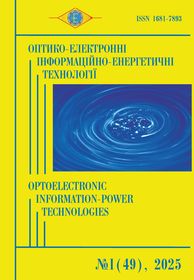Study of the double trigger phenomenon and comparison of minimax approximation with L2-regularization
DOI:
https://doi.org/10.31649/1681-7893-2025-49-1-36-43Keywords:
double descent, L2 regularization, minimax approximation, polynomial models, machine learning, anomaliesAbstract
This paper investigates the phenomenon of double descent and proposes the use of minimax approximation (L∞-norm) as an alternative to L2-regularization to improve the quality of model approximation. Double descent describes the dependence of the error on the complexity of the model: the error first decreases, then increases due to overfitting, and then decreases again. In contrast, in experiments with a model without regularization, a predominantly increasing trend of the error with short periods of decline was found, which is observed for an incomplete manifestation of the phenomenon. This is probably due to anomalous points in the data that caused an exponential increase in the error at high powers. Three approaches were noted: a classical model without regularization, a model with L2-regularization, and minimal approximation. L2 regularization added a penalty for large coefficient norms, which stabilized the error and prevented overfitting, especially at high polynomial degrees (200+). Minimax approximation minimized the error, thereby providing better maximum anomaly robustness and outperforming L2 regularization at low degrees (up to 50). The results confirmed that minimax approximation is more effective for problems with anomalies, while L2 regularization performs better on complex models with high polynomial degrees. The findings contribute to the understanding of the double descent phenomenon and show the practicality of applying different approaches due to data features and model requirements.
References
Golovach, A. B. Mathematical foundations of modeling complex systems. Kyiv: Naukova Dumka, 2018. – p. 286
N.V. Burennikova, O.V. Zelinska, I.M. Ushkalenko, Y.Yu. Burennikov "Optimization methods and models" – Vinnytsia: VNTU, 2019. – 121 p.
Ogirko O. I., Galayko N. V. "Probability theory and mathematical statistics: a textbook". – Lviv: Lviv State University of Internal Affairs, 2017. – 292 p.
Belkin, M., Hsu, D., Ma, S., & Mandal, S. Reconciling Modern Machine Learning and the Bias-Variance Trade-off. PNAS, 2019. – p. 23
Ng, A. Y. Feature Selection, L1 vs. L2 Regularization, and Rotational Invariance. Proceedings of the 21st International Conference on Machine Learning, 2004. - p. 8
Boyd, S., & Vandenberghe, L. Convex Optimization. Cambridge University Press, 2004. - p. 732
Chen, T., & Guestrin, C. XGBoost: A Scalable Tree Boosting System. KDD, 2016. - p. 785–790
Bishop, C. M. Pattern Recognition and Machine Learning. Springer, 2006. - p. 738
Downloads
-
PDF (Українська)
Downloads: 28
Published
How to Cite
Issue
Section
License
Автори, які публікуються у цьому журналі, погоджуються з наступними умовами:- Автори залишають за собою право на авторство своєї роботи та передають журналу право першої публікації цієї роботи на умовах ліцензії Creative Commons Attribution License, котра дозволяє іншим особам вільно розповсюджувати опубліковану роботу з обов'язковим посиланням на авторів оригінальної роботи та першу публікацію роботи у цьому журналі.
- Автори мають право укладати самостійні додаткові угоди щодо неексклюзивного розповсюдження роботи у тому вигляді, в якому вона була опублікована цим журналом (наприклад, розміщувати роботу в електронному сховищі установи або публікувати у складі монографії), за умови збереження посилання на першу публікацію роботи у цьому журналі.
- Політика журналу дозволяє і заохочує розміщення авторами в мережі Інтернет (наприклад, у сховищах установ або на особистих веб-сайтах) рукопису роботи, як до подання цього рукопису до редакції, так і під час його редакційного опрацювання, оскільки це сприяє виникненню продуктивної наукової дискусії та позитивно позначається на оперативності та динаміці цитування опублікованої роботи (див. The Effect of Open Access).


